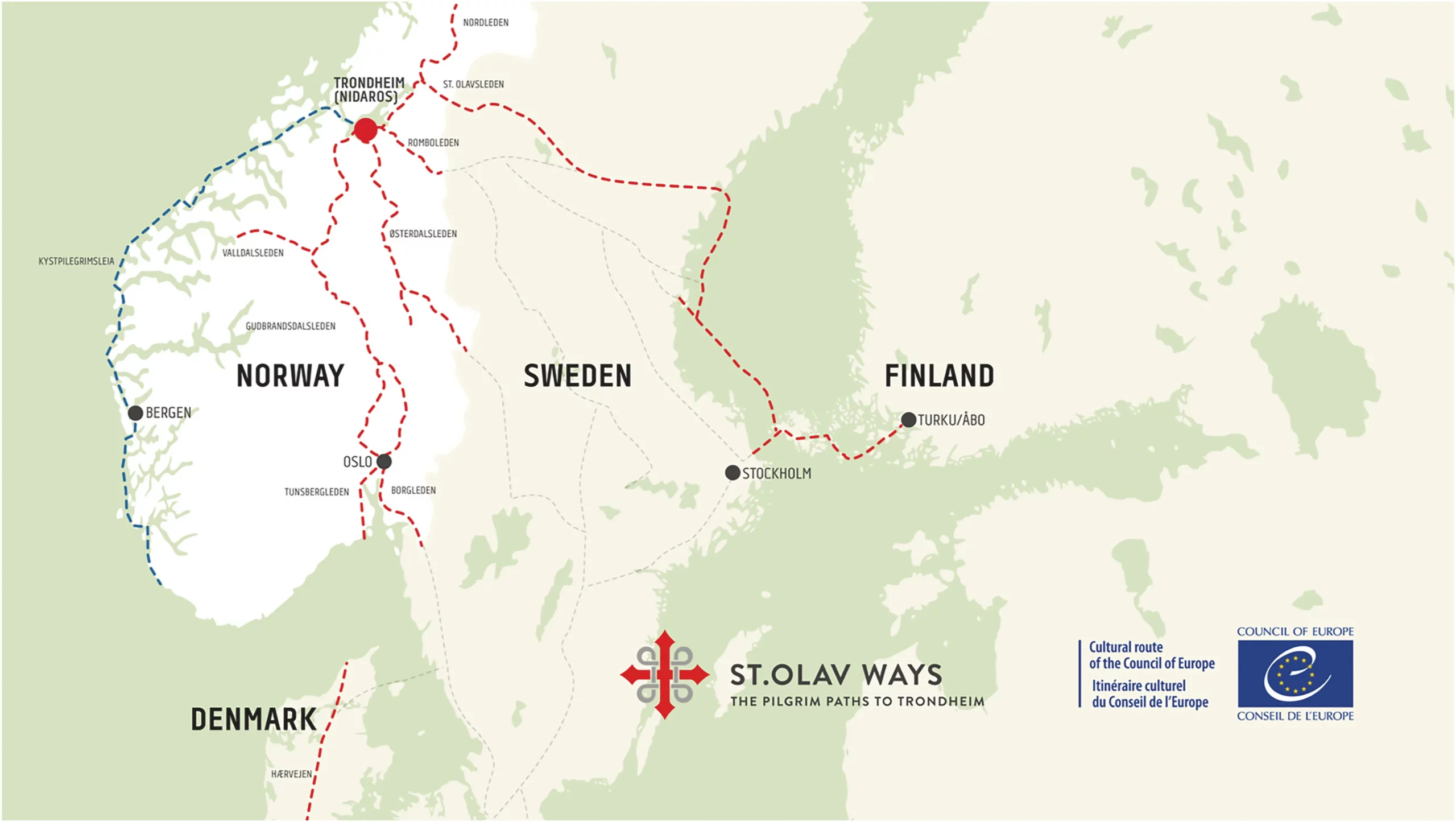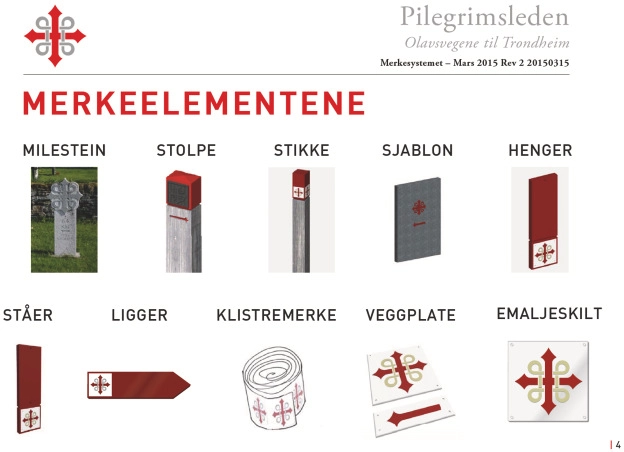Review of the Scientific Article: “Wayfinding and navigation behaviours among pilgrim tourists on the St. Olav Ways in Norway”

A map showing the St. Olav Ways paths in Norway, Sweden and Finland. The research for this article has been carried out along the Gudbrandsdalsleden path between Oslo and Trondheim in Norway (National Pilgrim Center, 2025c).
The article “Wayfinding and navigation behaviours among pilgrim tourists on the St. Olav Ways in Norway”, published in the Journal of Outdoor Recreation and Tourism (2025), offers a comprehensive and empirical examination of how pilgrim tourists navigate and orient themselves along the St. Olav Ways in Norway. Authored by Ole Edward Wattne, Linda Aandalen, and Mattias Jansson, the study focuses primarily on the Gudbrandsdalsleden path from Oslo to Trondheim, combining qualitative and quantitative methods to analyze wayfinding behaviors and systems.
The central objective is to understand how pilgrims engage with both physical and digital wayfinding systems. The research defines these systems as the collection of signage, markings, maps, digital platforms, and symbolic elements that enable orientation along the pilgrimage routes. These elements are not only practical tools but also contribute symbolically to the identity of the St. Olav Ways as culturally and spiritually significant paths.

A page from “Merkesystem” showing the ten different types of markings to be applied along the pilgrim paths in Norway.
Through a mixed-methods approach—including field observations, semi-structured interviews, digital ethnography (netnography), and surveys—the authors categorize wayfinding behaviors using two major theoretical frameworks: Mollerup’s (2005) classification of wayfinding strategies and Barker’s (2019) taxonomy, which identifies social, semantic, and spatial behavior types. This dual framework allows the authors to describe a nuanced range of strategies such as collaborative planning, use of signage and printed guides, reliance on digital maps, and scanning the environment for landmarks or markers.
A key insight is that pilgrims employ a combination of tools and strategies, shifting fluidly between them depending on the journey phase (planning, en route, or destination), environmental conditions, and individual preferences. Notably, the study reveals that semantic behaviors, such as following fixed-location signs or portable guidebooks, are the most commonly used strategies among respondents. However, spatial and social behaviors also play a critical role, especially in unfamiliar or unmarked areas.
The research pays special attention to the information ecosystem established by the National Pilgrim Center, which includes standardized signage handbooks, physical markers (e.g., milestones, wooden signs), interactive digital maps, and downloadable GPX files. The article highlights how this layered system ensures both consistency and accessibility, enhancing the safety and meaningfulness of the pilgrim experience.
One of the paper’s strengths lies in its management implications. The findings can guide the planning, design, and maintenance of wayfinding systems for other pilgrimage routes and outdoor trails. Furthermore, the empirical data supports the idea that well-structured wayfinding systems are crucial not only for navigation but also for branding, communication, and the perceived legitimacy of the paths as pilgrimage routes.

Pilgrims with a milestone marker – the final one outside the Nidaros cathedral in Trondheim – along the St. Olav Ways paths in Norway. Photo: Mattias Jansson
In conclusion, the article successfully demonstrates how established theories of wayfinding apply to the unique context of pilgrim tourism. It contributes to both academic literature and practical trail management, offering a best-practice model for designing information-rich and user-centered navigation systems in outdoor tourism. Its thorough methodological approach and theoretical grounding make it a valuable resource for researchers, designers, and policymakers interested in cultural tourism and experiential travel.